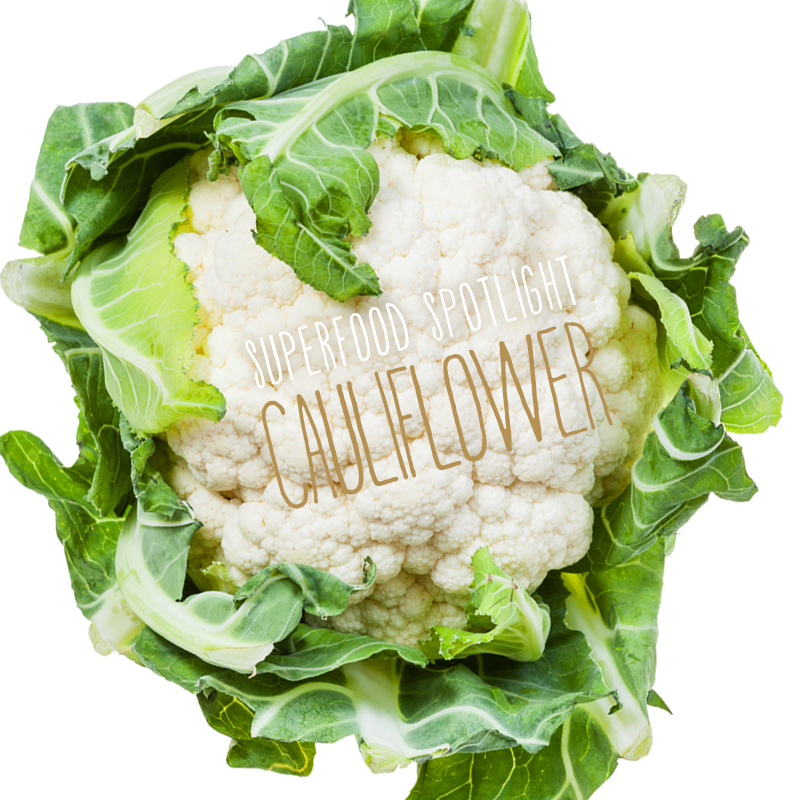When it comes to cauliflower, there tend to be two distinctly different opinions of this bountiful Brassica: you’re either really for it or you’re really against it. Vegetables are polarizing for sure, but there’s something about cauliflower (and to an extent, it’s cousin broccoli) that makes people either love it or leave it.
Move Away from the Microwave
For many of us, our first introduction to cauliflower came with a side of cheese-flavored sauce. Straight from the freezer to the microwave, it a shrink-wrapped plastic bag, most likely, before being plopped unceremoniously to our plate, it’s no wonder many adult choose “pass” when scanning both menus and the produce shelf. But we’re here to tell you in just a few words: give cauliflower, one of our favorite superfoods, another shot.

Sure, it looks a bit weird (most fruits and vegetables do, too, if you look at them for too long) and we’ve long been told to avoid white foods, but cauliflower is nutrient powerhouse that we almost promise will grow on you when prepared well.
Cauliflower Love:
Let Us Count the Ways
So why do we love cauliflower? For quite a few reasons to be sure, including an impressive nutrient profile and the fact that it’s a fantastic prebiotic that feeds the probiotics in your stomach, which may help support digestion and immunity.
They’re rich in antioxidants, which help protect against free radical damage which can lead to cancer, and they contain vitamins and minerals that are associated with reduced memory loss and strong bones. In terms of diet highlights, cauliflower is rich in:
Fiber –3 grams, roughly, per one cup serving
Vitamin C – a little more than 46 mg, or roughly 77 percent RDA, per one cup serving
Vitamin K – roughly 16 mcg, or roughly 20 percent RDA, per one cup serving
Folate – roughly 57 mcg, or 14 percent RDA, per one cup serving
Moreover, they’re low in fat, low in carbohydrates, low in sodium and cholesterol-free. Oh, and did we mention one cup only set you back about 25 calories? Hello, second servings!
Chew on This
It’s easy to enjoy the health benefits of cauliflower without taking a trip to the frozen food section (though flash-frozen, pure cauliflower florets are great to keep on hand for steaming, roasting or baking). Eat them raw with your favorite dip as part of a vegetable tray, or in a salad with your favorite kefir salad dressing. Cauliflower is also lovely baked, toasted, pan-fried and roasted (no really, the whole thing). It makes a low-carb pizza crust and even acts as a rice substitute in many of your favorite recipes. We love steaming it and pureeing it in lighter soups, or blending it into smoothies for an added fiber and nutrient boost (we promise you can’t taste it).
We predict an rise in cauliflower-inspired recipes this year, due to their uncanny ability to resemble pieces of meat in recipe re-dos. Let us know your favorite way to prepare it by visiting us on Facebook, Twitter or Instagram!